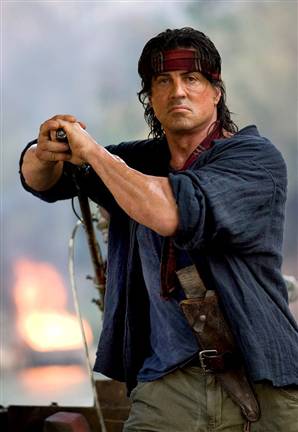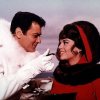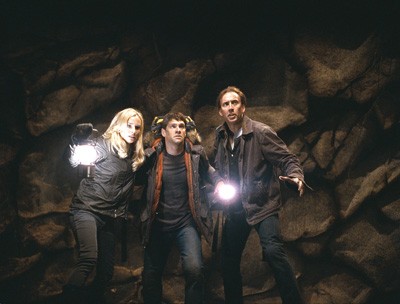Interview: At the Death House Door
Posted on May 27, 2008 at 8:00 am
At the Death House Door is an extraordinary documentary from the makers of “Hoop Dreams.” It is the story of Pastor Carroll Pickett, who served 15 years as the death house chaplain to the infamous “Walls” prison unit in Huntsville. He spent the last 24 hours with 95 different men who were about to be executed. After each was killed, Pickett recorded an audiotape account of his trip to the death chamber. Through his experiences, including the witnessing of the execution of a man later proven to be innocent, he became convinced that the death penalty was wrong. The film premieres on May 29 at 9:00 PM Eastern on the Independent Film Channel.
I spoke to Pastor Pickett about his experiences:
How did you first come to work at the prison?
I was minister of a Presbyterian church in Huntsville Texas. During the time I was at that church they had a prison siege and the director called me and said, “I want you to minister to the families of those who were hostages. For 11 days and nights they were held hostage and then they had a big shoot out across the street. The only ones killed were two of my church members. I was planning to do one’s wedding the next Saturday. Then in 1980 the same guy who called me asked me to come work at the prison for one year. I went for one year. I didn’t sign any papers but I stayed there 16 years. God had prepared me back in 1974 to go to the prison. I went there believing this was God’s will. I felt like God wanted me to be there. As it says in the Bible, “I was in prison and you came to me.”
What surprised you about the prison experience?
The biggest thing that surprised me that there were so many nice people who were willing to participate in the program, so many who were Christians who had, for lack of a better term, left the fold. There were so many victimless crimes, so many who were innocent, so many who had made financial mistakes.
What did you try to teach them?
We helped them understand that it is happier and better to live the way God wants you to — whatever religion you are. We had Catholics, 26 Jewish people — we had the first seder in the prison. In prison you can still practice your faith, and I was so happy many of them were really willing to give a lot. There were a lot of people who were good but had made mistake. I don’t believe in rehabilitation, but these people had changed. one night had changed me. So many of them got out. Close to 100 who used to be in prison are now ministers.
What did you use to reach these people?
I believe that the music is so important. So many people are musicians and express themselves musically. We started a choir. We had a different one for the Catholics because they sing different songs, one for the Hispanics, a gospel for the black prisoners. One of the requirements was that in order to be a part of the choir they had to maintain all the rules, they had to work, they had to participate in all the activities. One former back up singer for Don Ho was one of my singers, a state Supreme Court justice was one of my singers. I was permitted to give points for parole for those who participated.
Did the prisoners help each other?
Yes! The prisoners ministered to each other. We had 28 ministers in prison. Ministers go to prison too. We had a father and son who were missionaries in South America. The mother died and the father got real angry at God, so they became bank robbers. And a lot of ministers get framed.
Tell me about your work with the men on death row.
I was chaplain for the people in the death house. I only got to see them on the last day, the way it was set up. I stayed with them usually from 6 am to 12 midnight. We used to execute them at 12. After helping 95 walk the gurney and get killed by the state, I concluded that there are innocent people being put to death and there are mentally retarded. Because of the “law of parties,” there are those who are guilty by law but not by crime. The one who actually did the crime got off and the other one was executed.
Carlos De Luna was innocent, we proved he was innocent. He had no father, his father left him and his stepfather was a drunk. On that last day, I took care of him all day long and we got along real well. I told him I believed he was innocent and he said, “I wish everybody else did.” That afternoon he asked, “Can I call you Daddy? That is different than being called “Father.” I have a son the same age. That changed the whole attitude in the death house, that night, letting him call me that. Carlos said, “Thank you Daddy. Thanks for being with me, Daddy. I wish I had you when I was a boy — I would never have been a problem at all.” He asked, “Daddy, would you pray?” He was in the cell, on his knees. I put my hands through the bars. That is illegal but I did not pay attention to those rules. While they strapped him to the gurney he said, “Daddy, I appreciate you being here today.” I never will forget those big brown eyes looking at me. He kept looking up. I don’t know what he was trying to say. I was hoping he would say, “Thank you, Daddy.” That’s the way I would like to believe. He was a good kid. I would have taken him home forever.
IFC has made available teaching materials about the movie.

 Same “stick it to the man” story. Same stoic, emotionally damaged but still a fighting machine (mean, yes; lean, not so much) who can take on a hundred guys with guns because he is so well trained and so pure of heart.
Same “stick it to the man” story. Same stoic, emotionally damaged but still a fighting machine (mean, yes; lean, not so much) who can take on a hundred guys with guns because he is so well trained and so pure of heart.
 The first movie ended with historian/treasure-hunter Benjamin Franklin Gates (Nicolas Cage) triumphant, with riches, a dream house, and a dream girl, historian/knockout (and conveniently named) Abigail Chase (“Troy’s” Helen Diane Kruger). He has pretty much lost all of that as this movie begins. Meanwhile, sidekick Riley (Justin Bartha) can’t get anyone to buy his book and has learned that “the tax on $5 million in income is $6 million) as his fancy car is towed away by the IRS. It’s time to break out the treasure maps and cypher-decoders.
The first movie ended with historian/treasure-hunter Benjamin Franklin Gates (Nicolas Cage) triumphant, with riches, a dream house, and a dream girl, historian/knockout (and conveniently named) Abigail Chase (“Troy’s” Helen Diane Kruger). He has pretty much lost all of that as this movie begins. Meanwhile, sidekick Riley (Justin Bartha) can’t get anyone to buy his book and has learned that “the tax on $5 million in income is $6 million) as his fancy car is towed away by the IRS. It’s time to break out the treasure maps and cypher-decoders.